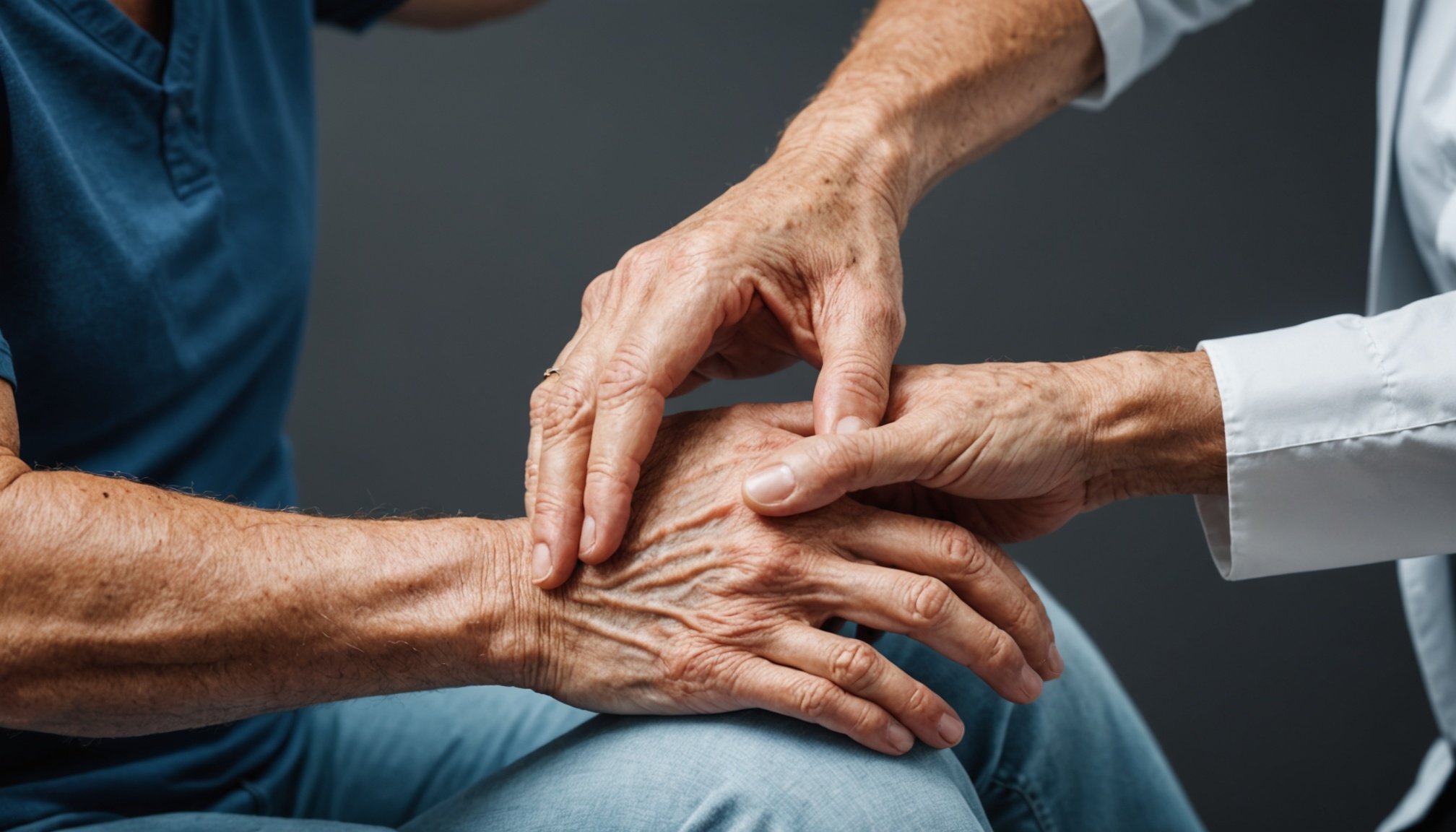Innovative Medical Approaches to Pain Relief
In recent years, innovative pain relief methods have transformed the way medical treatments address rheumatoid arthritis. A prominent development in this field is the use of biologics and JAK inhibitors. These novel therapies target specific components of the immune system, offering more precise control over inflammation and pain. Unlike traditional medications, they are engineered to modulate the immune response, reducing symptoms more effectively for many patients.
Biologics, for instance, are complex molecules derived from living cells. They block inflammatory pathways, helping to slow the progression of pain and joint damage. On the other hand, JAK inhibitors disrupt specific cellular signals involved in the immune process. This approach can offer relief where conventional drugs fall short, making these treatments invaluable for those experiencing unmanageable symptoms.
Additional reading : Exploring Cutting-Edge Innovations in Stem Cell Therapy for Heart Tissue Regeneration
Another significant advancement in medical treatments is the integration of personalized medicine. By tailoring treatment plans based on an individual’s genetic makeup and disease characteristics, physicians can enhance the effectiveness of pain management. This approach not only maximizes therapeutic benefits but also minimizes potential side effects, leading to a more holistic pain relief experience tailored to each patient’s unique needs.
Holistic and Natural Remedies
Exploring holistic pain management offers a fresh perspective on alleviating rheumatoid arthritis discomfort. Emphasizing natural remedies and complementary therapies, this approach focuses on the overall well-being of individuals instead of solely targeting symptoms.
Have you seen this : Revolutionary Breakthroughs in Non-Invasive Cancer Screening: Discover the Latest Innovations
Use of Acupuncture and Physical Therapy
Acupuncture, a technique rooted in traditional practices, taps into specific points on the body to alleviate pain and promote healing. By stimulating nerves, this method encourages the body’s natural pain-relieving processes. Similarly, physical therapy plays a vital role in improving joint function and reducing stiffness. Patients can benefit from customized exercise plans, which, when consistently followed, nurture joint flexibility and resilience.
Dietary Considerations for Pain Relief
Incorporating certain foods and dietary supplements into daily meals may also aid in managing rheumatoid arthritis symptoms. Nutrient-rich foods such as omega-3 fatty acids, found in fish oil, exhibit anti-inflammatory properties and can support joint health. Conversely, diets high in processed foods may exacerbate inflammation, highlighting the importance of informed dietary choices.
Mindfulness and Stress Reduction Techniques
The psychological impact of chronic pain should not be underestimated. Practices like mindfulness meditation and stress reduction techniques provide valuable tools for mental well-being. Through focused breathing and mental awareness, individuals gain the capacity to manage pain more effectively.
Lifestyle Modifications
Adapting one’s lifestyle can significantly enhance daily management for those with rheumatoid arthritis (RA). Implementing lifestyle changes—including regular, tailored exercise routines—is crucial for joint health and reducing pain. These exercises, focused on flexibility and strength, can help maintain mobility and ease discomfort. Patients are encouraged to work with healthcare professionals to design routines that accommodate their unique capabilities and limitations.
Another pivotal element of RA management is maintaining a balanced lifestyle. This involves integrating stress reduction techniques, a healthy diet, and proper rest into daily life. Prioritising sleep hygiene, for instance, can lead to notable improvements in both physical health and pain management. Ensuring a consistent sleep schedule, a calming evening routine, and a comfortable sleeping environment can improve sleep quality, which is often disrupted by chronic pain.
Ultimately, adopting a well-rounded approach to managing RA helps individuals cope better with symptoms and enjoy improved quality of life. A balanced lifestyle not only supports physical health but also fosters mental well-being, enabling patients to handle the challenges posed by RA more effectively.
Patient Perspectives and Testimonials
Understanding the experiences of patients living with rheumatoid arthritis (RA) provides invaluable insight into effective pain management strategies. These personal narratives often highlight coping mechanisms that can inspire others on a similar journey.
Sharing Success Stories
RA patients who have experienced noteworthy improvements often share their success stories. These accounts typically detail the integration of both traditional and complementary therapies, showcasing real-life examples of overcoming challenges. Such testimonials offer hope, proving that positive outcomes are attainable, even in the face of persistent pain.
Coping Mechanisms from RA Patients
Many individuals with RA develop unique coping mechanisms to manage daily pain and symptoms. Techniques may include maintaining a routine of low-impact exercises, embracing mindfulness practices, or utilizing heat therapy. Sharing these approaches not only fosters a sense of community but also equips others with practical tools for daily management.
Peer Support and Community Resources
Peer support groups and community resources prove invaluable for emotional and psychological well-being. These networks facilitate the exchange of advice, compassion, and understanding, creating a support system that eases the isolation often associated with chronic illness. Engaging with these communities can be a pivotal aspect of managing RA.
Evaluating Risks and Benefits of Pain Relief Strategies
Understanding the risks and benefits of pain relief strategies is crucial for informed decision-making. While innovative therapies like biologics and JAK inhibitors offer promising pain management, they are not without potential side effects. These can include increased susceptibility to infections and potential liver damage. Patients should engage with healthcare professionals to weigh these risks before opting for such treatments.
Conversely, traditional treatments like non-steroidal anti-inflammatory drugs (NSAIDs) have been staples in pain management. However, they may lead to gastrointestinal issues with prolonged use. Evidence-based medicine helps guide patients in evaluating the efficacy and potential drawbacks of both traditional and innovative treatments.
Deciding on a pain relief strategy requires a nuanced understanding of individual needs and circumstances. A detailed comparison of effectiveness is essential for treatment plans. While biologics may provide targeted relief, they tend to be more costly and less accessible than NSAIDs or other conventional options. Benefits analysis is key to discerning the most suitable course of action for each patient, considering both short-term relief and long-term health implications. By adopting a comprehensive approach, patients can navigate the complexities of treatment risks confidently.
Accessibility and Cost of Treatments
Navigating the costs and accessibility of treatments for rheumatoid arthritis presents a notable challenge for many patients. Insurance coverage significantly influences the affordability of therapies, especially innovative pain relief options like biologics and JAK inhibitors. These advanced therapies, while effective, can be costly, making comprehensive insurance plans essential for mitigating financial burdens. Patients should review their insurance policies to understand the extent of coverage available.
Various patient assistance programs have been developed to help those who face financial barriers. These programs, often offered by pharmaceutical companies, aim to reduce costs for eligible patients, ensuring wider access to essential treatments. Additionally, non-profit organizations may provide resources and support to navigate the complex landscape of treatment affordability.
In cases where innovative therapies remain inaccessible due to costs, it’s important to explore alternative medical treatments, including traditional medications or complementary therapies. Weighing options based on financial circumstances and insurance coverage can lead to more sustainable treatment plans.
Ultimately, informed decision-making—driven by a thorough understanding of treatment costs, insurance coverage, and available assistance programs—enables patients to access effective pain relief strategies. This empowers individuals to manage their rheumatoid arthritis effectively without compromising financial stability.











